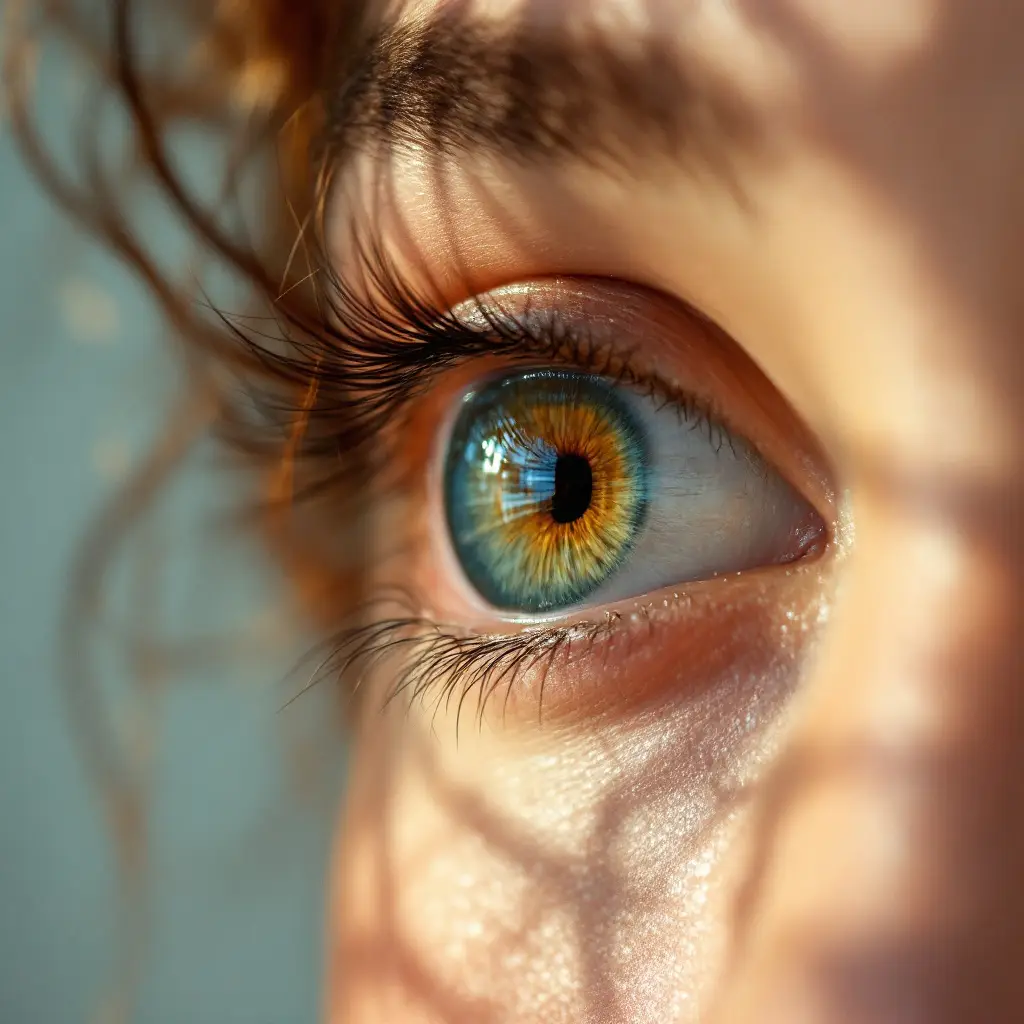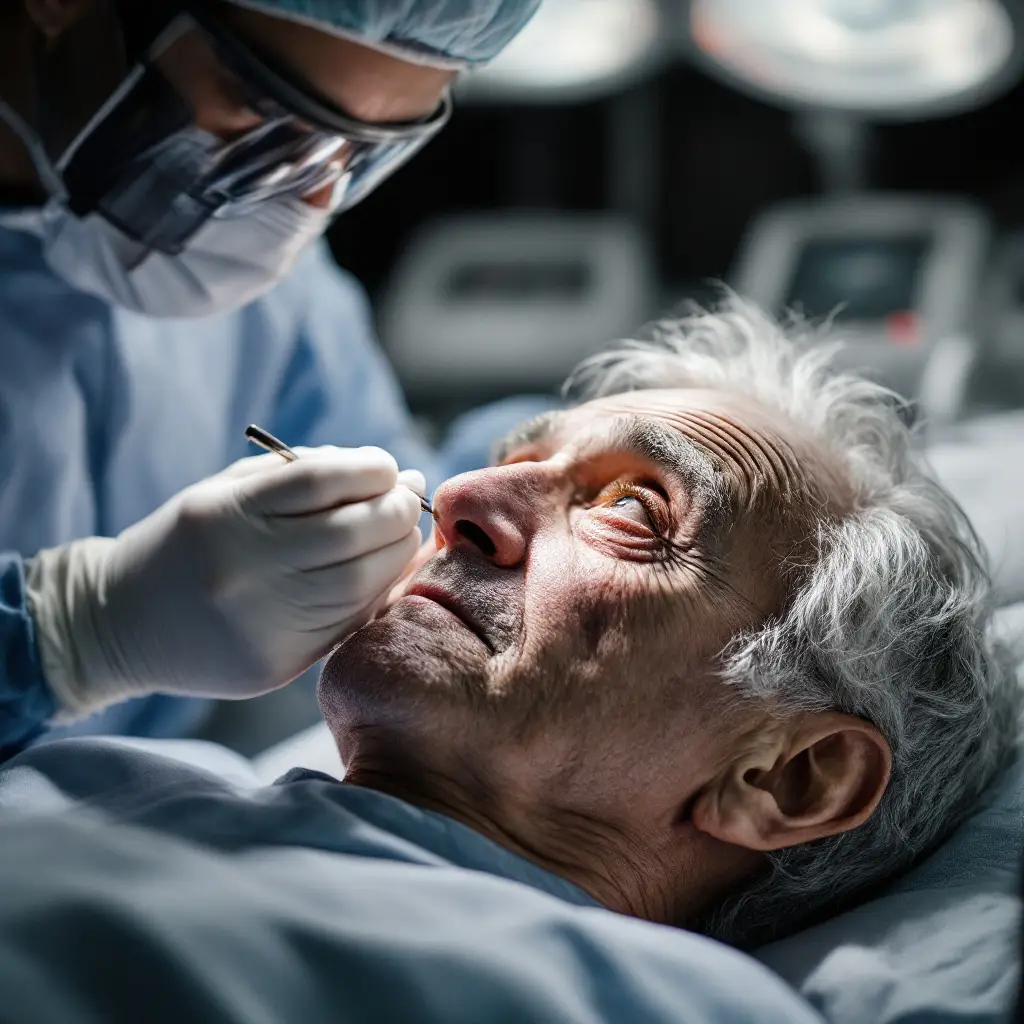Secondary cataract, also known as Posterior Capsule Opacification, is caused by thickening and clouding of the posterior capsule of the artificial intraocular lens implanted during cataract surgery. This phenomenon occurs when epithelial cells that survived the surgery begin to multiply and form a cloudy layer on top of the box. The process may occur several months to years after the initial surgery and can cause decreased vision, blurriness and a feeling of glare.
The risk factors for secondary cataract
There are several factors that increase the risk of developing the disease after cataract surgery:
- Age of the patient – relatively young patients tend to develop the disease at a faster rate compared to adults.
- The type of lens implanted – certain types of lenses may increase the risk of box condensation.
- Eye condition and medical history – patients with medical conditions such as chronic inflammation of the eye, diabetes or glaucoma are at higher risk.
- The surgical technique – the surgical method and the way the original cataract was removed can affect the risk of secondary cataracts.
- Genetics – genetic predisposition can play a role in the development of the disease.
Knowing the risk factors can help doctors and patients in more correct management of the condition and in choosing the most appropriate treatment.
Symptoms and identification of secondary cataract
The symptoms of secondary cataracts can appear gradually and be similar to those of primary cataracts. The main symptoms include blurred vision, decreased visual acuity, increased glare especially in strong lighting conditions, and the appearance of halos around light sources. Many patients report a feeling of fog in the eyes and difficulty performing daily activities such as reading, driving or watching TV.
The identification of a secondary cataract is usually carried out by the patient himself when he notices a decrease in the quality of vision. With the appearance of symptoms, it is recommended to contact an ophthalmologist for a professional diagnosis and confirmation of the suspicion of the disease.
Secondary cataract diagnosis methods
Secondary cataract diagnosis is performed by an ophthalmologist using several tests and medical tools. The initial examination includes a visual acuity test and a comprehensive eye examination that includes pupil dilation. Using the eye microscope (slit lamp), the doctor examines the intraocular lens and the posterior box to detect the presence of condensation and turbidity.
In addition, imaging tests such as ultrasonography or OCT can be used for a more accurate assessment of the condition of the box and lens. These tests allow the doctor to identify the location and thickness of the turbidity and determine the severity of the disease.
Accurate diagnosis of secondary cataract is critical for determining the appropriate treatment and improving the quality of the patient’s vision.

Secondary cataract treatment options
The main treatment for secondary cataracts is a procedure called YAG Laser Capsulotomy).
במהלך ההליך, משתמשים בלייזר כדי ליצור חור קטן בקופסית האחורית של העדשה, אשר מאפשר לאור לעבור דרכה באופן חופשי ומשפר את הראייה.
ההליך נמשך בדרך כלל מספר דקות, אינו כואב ומתבצע תחת טיפות עיניים להרדמה מקומית.
המטופלים חוזרים לפעילות יומיומית תוך זמן קצר לאחר ההליך.
There are rare cases in which the laser is not enough to solve the problem and then a surgical operation may be required to open the box and sometimes even to replace the intraocular lens.
Comparison between the different treatments
YAG laser capsulotomy It is the most common and effective method for secondary cataract treatment. The procedure is quick, does not require special preparations and does not require hospitalization. The results are immediate and most patients experience a significant improvement in vision within a very short time. Possible complications are rare and include transient eye inflammation, increased intraocular pressure, or retinal detachments.
Surgical operation, on the other hand, is performed in cases where the laser fails to solve the problem or when there are additional complications. The operation is more complex, requires a longer recovery time and carries higher risks of complications such as infection, bleeding or damage to the retina.
In general, YAG laser capsulotomy It is the preferred treatment in most cases of the disease due to its high efficiency and few risks. However, the choice of the appropriate treatment depends on the specific eye condition of the patient and the recommendations of the attending physician.
Research progress
Research progress in recent years in the field of secondary cataracts focuses on improving treatment techniques and understanding the pathophysiological mechanisms of the disease. New research deals with the development of advanced intraocular lenses with coatings that reduce the risk of developing the disease. In addition, biological materials and nanotechnologies that can be added to lenses are being researched to prevent epithelial cells from growing on the lens.
Also, studies are testing the effectiveness of drugs and eye drops to prevent secondary cataracts, with the aim of reducing the need for surgical intervention. Other breakthroughs include the use of more advanced lasers and innovative imaging technologies for earlier and more accurate detection of the disease.
Long-term results of secondary cataract treatment
Long-term results of disease treatment, especially with YAG laser capsulotomy, they are usually very good. Most patients experience a significant improvement in vision that allows them to return to daily activities without further problems. The effect of the procedure is usually immediate, and in most cases the improvement in vision is maintained for a long time.
However, there are rare cases in which the disease can recur, and then the capsulotomy may need to be repeated. Advances in research and technology help reduce the rate of recurrence and increase the success of initial treatment.
Among some patients, especially those with additional medical conditions in the eye, there may be complications or secondary problems that require additional follow-up and treatment. It is important to remain in regular medical follow-up after the treatment of the disease to ensure optimal eye health over time.

Preventing and reducing the risk of secondary cataracts
Preventing and reducing the risk of secondary cataracts begins with a successful and accurate primary cataract surgery. There are several strategies that can help prevent the development of secondary cataracts:
- Choosing an appropriate lens – using high-quality and durable intraocular lenses with special coatings that reduce the risk of cell formation on the posterior box.
- Advanced surgical techniques – use of precise and advanced surgical techniques that reduce the amount of epithelial cells remaining in the eye after surgery.
- Medicinal eye drops – advanced research deals with the development of eye drops that can help prevent the growth of cells on the back box.
- Medical follow-up – it is important to have regular medical follow-up after cataract surgery. Early detection of primary signs of secondary cataracts can allow rapid treatment and prevent the development of vision problems.
- Using eye protection – protecting the eyes from ultraviolet radiation and strong light can help prevent inflammatory processes and the proliferation of cells in the eye.
Secondary cataract is a possible condition after cataract surgery that causes the capsule of the lens to cloud. This can cause symptoms such as blurred vision and sensitivity to light. The treatment of the disease includes a laser treatment called posterior capsulotomy which can be fast and very effective in restoring vision. Contact your eye doctor if you notice new, persistent, or more severe vision changes after surgery.





